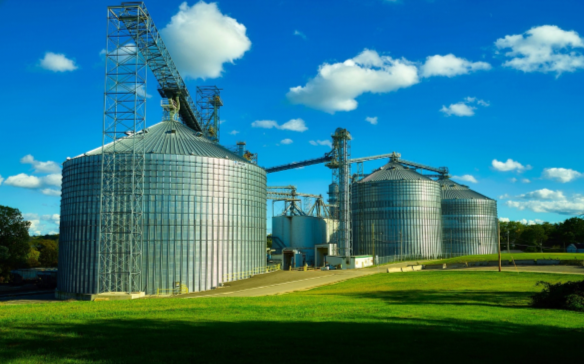Written by Ellie Batchiyska
The agricultural industry is one of the most hazardous in the United States. Most people are not as familiar with its hazards as they are with the construction industry’s, making them often overlooked. This contributes to further danger, however.
According to the Bureau of Labor Statistics, the fatality rate for workers in the agricultural industry is seven times that of other private industry workers. Even workers who are injured often face permanent impairment, making it extra important to know the primary hazards associated with this kind of work.
Grain-handlers are particularly impacted by agricultural hazards. These are workers in facilities that process, ship, and handle corn, wheat, oats, barley, and other similar commodities.
There are three main hazards grain-handlers face, but the Occupational Safety and Health Administration fortunately offers sustainable solutions to prevent against them.
Engulfment & Suffocation in Grain Bins
Although not dangerous unto themselves, grain bins can be a risky environment. This is where grains are stored in large volumes, and unfortunately, where a vast number of deaths occur. Workers that maintain grain bins can become suddenly buried or trapped by grain while on the job. As a result, they can suffocate.
There are four causes of sudden grain engulfment.
- Standing on flowing grain. Flowing grain turns into quicksand. This is most common when the auger is operating. The auger drains grain from the bin, causing a steady flow until the bin is emptied. If a worker is standing on flowing grain, they will sink into it, and the constant movement will make it impossible to get out. The Occupational Safety and Health Administration (OSHA) states that a 6-foot tall worker can become enveloped by grain in 11 seconds, and escape becomes impossible after 5 seconds. Workers should never enter grain bins while the auger is in operation.
- Standing on or below bridging. Bridging refers to moist or moldy clumps of grain that stick together to form a “bridge”, therefore resulting in an empty space underneath them. If a worker steps on one of these, it will break and the walls of grain beside the bridge will begin to cave in.
- Trying to loosen a pile of grain. Never overestimate a wall of grain’s sturdiness. Trying to loosen or un-clump it will cause a domino effect, and the rest of the grain will begin to avalanche. Clumped grain should be loosened from the outside of the grain bin, by knocking against it with a pole or stick through an access cover.
- Dangerous atmospheric conditions. Sometimes, oxygen levels in a grain bin can be low, or hazardous gases may be present. The air quality and oxygen levels should be evaluated before any workers enter, or they could suffocate.
Most of these can be prevented by making workers aware of the preventative measures. Workers should avoid walking on grain, always wear a body harness, and have an observer/partner present at all times.
Combustible Dust Explosions
In the last 35 years, there have been more than 500 grain dust explosions in grain handling facilities. These have taken the lives of more than 180 people, and injured approximately 675. Grain dust can easily combust if it becomes airborne or accumulates on a surface. Ignition sources, such as overheated motors, misaligned conveyor belts, and welding surfaces, can serve as sources of danger.
If the accumulation of grain dust occurs in an enclosed space, the pressure will rise, causing an explosion. Usually, there is an initial explosion, which dislodges the dust into the air. If ignited, this dispersed dust will cause a secondary (and far more deadly) explosion.
To prevent this, there should be consistent monitoring and assessment of potential ignition sources and enclosed spaces. Cracks and corners should always be investigated for grain dust particles.
Falls from Heights
Much like in construction, this is a major factor to consider, and one that is continuously overlooked. Grain-handling employees can experience falsl from heights much like any other workers in manual labor: from machinery, unguarded/unlabeled floor openings, platforms, etc.
However, the exterior ladders on grain bins also pose a risk. These ladders are usually used to gain entry to the grain bin. As workers move from the ladder to the roof of the grain bin or grain entrance, one minor misstep can endanger their life.
For this reason, a body harness should always be worn when accessing a grain bin, as previously mentioned. Someone on the ground should also be supervising at all times, and be available to direct the worker into the entrance or onto the roof in case visibility is hindered for any reason.
Other Hazards
Amputations can also occur in grain-handling facilities, though less common. Grain bins contain mechanical equipment, covers, augers, and other fixtures that workers can easily get caught in. Spoiling grains can also release hazardous gases, and pesticides or other fumigants can cause poisoning.
Grain-handlers should not underestimate the dangers of working amongst large volumes of grain. The casualness associated with this profession often makes its employees even more vulnerable to hazards. Frequent housekeeping and assessment of grain bins is essential to the safety of workers in this industry, so managers should ensure this work is well-distributed.
Ellie Batchiyska is a writer for Advance Online, the first web-based training provider to be accepted by the OSHA Outreach Program for DOL OSHA completion cards.